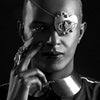
A portrait of the artist as a young visionary.
The London-based photographer Steve Brown is a master image-maker. Brown understands the value of the perfect visual, the right stylistic flourishes to bring his dynamic tableaux to life. Technically adroit, intuitive and fizzing with empathy, Brown is cognizant of the power of representation and cultural diversity, and his photos reflect this rich Weltanschauung. In Steve Brown’s world, the spiritual and the corporeal remain intertwined, fusing together to form the most mind-melting portraits. In this exclusive interview, he breaks down his origin story, which begins in Bradford, and gives us a glimpse into the mind of one of the most talented young photographers at work today.
How did you embark on your photographic career? What was the spark of the imagination that made you think, I want to do this for as long as I’m alive?
My parents, and indeed my grandparents, were keen amateur photographers so I was exposed to it from a young age, but I originally wanted to be an illustrator, and so after finishing school I did a one year art foundation course at Bradford University, wheres we were exposed to different art disciplines; painting, illustration, sculpture etc, and photography. The photography was the bit that really caught my interest and so I went on to do a photography degree and never looked back.
After graduating I moved to London immediately and started assisting professional photographers on a freelance basis. This gave me an invaluable insight into the business side of photography that education never can, and also made me realise that it was a viable career and that I did really enjoy it as a lifestyle. After a couple of years of assisting I was ready to forge my own career and start shooting professionally for myself.
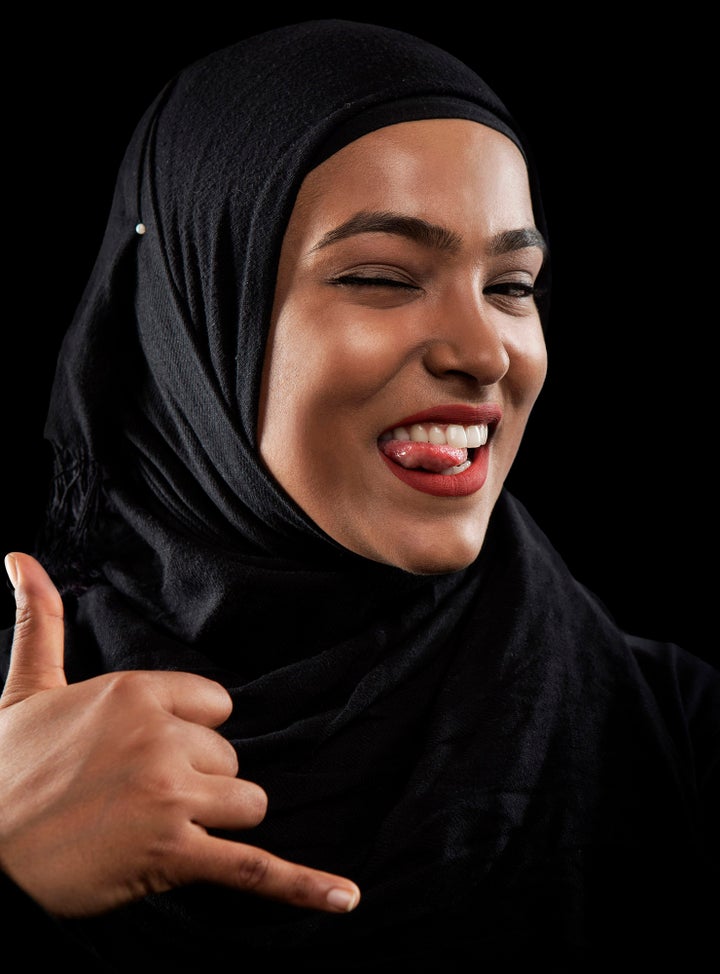
Shazia Hossen, personal trainer.
Talk me through the kinds of photographers that inspired you along the way to where you’re at now in your career.
In the early days of my life in photography I really struggled to find photographers that inspired me. The only real way to see photography was to look at photography books, and the kind of fine art photography that got made into books (and still does) wasn’t the kind of thing that excited me. I used to look for inspiration in CD sleeves or music magazines, and so I don’t even know who the photographers were for some of my most formative influences. I did admire Annie Leibowitz, David LaChappelle, Andy Earl (who I went on to assist for a couple of years) and any number of great music photographers of the late ’90s and early ’00s.
Nowadays things like Instagram have made accessing photography from all around the world infinitely easier. If some anonymous guy in Peru is taking amazing photos in his garage I can still see them and be inspired, which is great. So I see a lot more inspirational photography these days, but to name a couple of names I’d say Frank Ockenfels III, who has done amazing stuff for TV shows such as Breaking Bad, Mad Men and American Horror Story, and Carlos Serrao, who does fantastic sports advertising work.
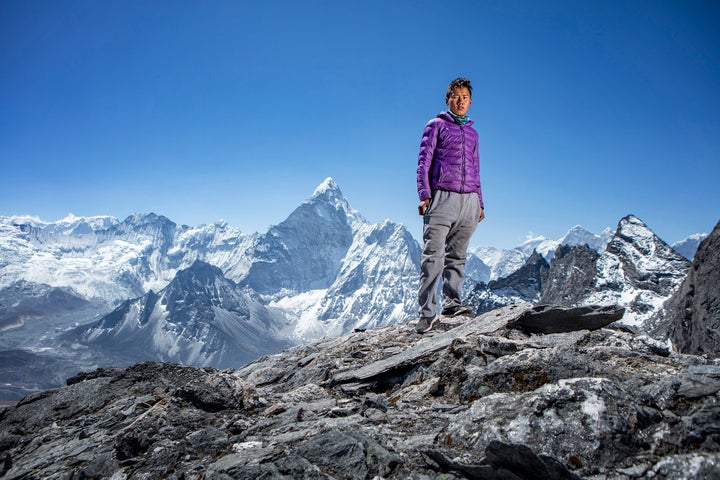
Tashi, a Nepalese climbing Sherpa, photographed in the Nepal Himalayas.
What I admire about you is that you’ve remained resolutely independent-minded in your approach to your work and the results are breathtaking. You have such a specific aesthetic as well. What gets you excited about any given project?
I think I’m lucky that I’ve managed to develop a ‘look’ which people then hire me to apply to their project. When people moan that ‘anyone can be a photographer these days’ and that digital cameras mean that there’s no place for professionals any more I always think ‘yes, maybe anyone can take photos, but they can’t take my photos’. Photography should be more than just knowing how to use a camera, it should be about communicating a unique vision of the world, through lighting, composition, style; just the ‘feel’ of the images.
So if someone says ‘we love what you do, can you do it for us?’ then that definitely gets me excited about a project! Other than that, having the resources to do a project justice is always nice, and if it involves a subject matter that excites me then I’m 100% onboard.

Rhiannon Ishmael, British semi pro footballer.
What are your favourite novels, music and films and how have they contributed to the way you approach your work and life?
As a teenager I was into punk, hardcore and metal music and this led directly to me pursuing a career in music photography for several years. Over time my tastes have somewhat mellowed and I now listen to a lot of hip hop and electronica, and I definitely use atmospheric music to get into a frame of mind that matches the kind of pictures I’m working on. If I am working on something dark and moody I’ll probably listen to some dark, moody music.
I love films and get a lot of inspiration from cinematography. Recently I thought Ghost In The Shell was visually brilliant, as was Mad Max: Fury Road. One of my favourite films for sheer style and cohesive artistic vision is The Book of Eli, beautifully shot and with an amazing soundtrack by Atticus Ross. And a film that always gets me fired up to go to amazing places and shoot amazing people is The Secret Life of Walter Mitty. There’s a photographer in the film called Sean O’Connell who essentially has my dream career! Watching that film was a big part of what inspired me to travel to Nepal and photograph Sherpas at Everest Base Camp.
One of my favourite sets of novels is William Gibson’s Blue Ant trilogy (Pattern Recognition, Spook Country and Zero History). They always make me want to be part of something cutting edge, existing right at the edge of what’s possible, working with people who are at the top of their game and having the resources to create work that is truly exceptional.
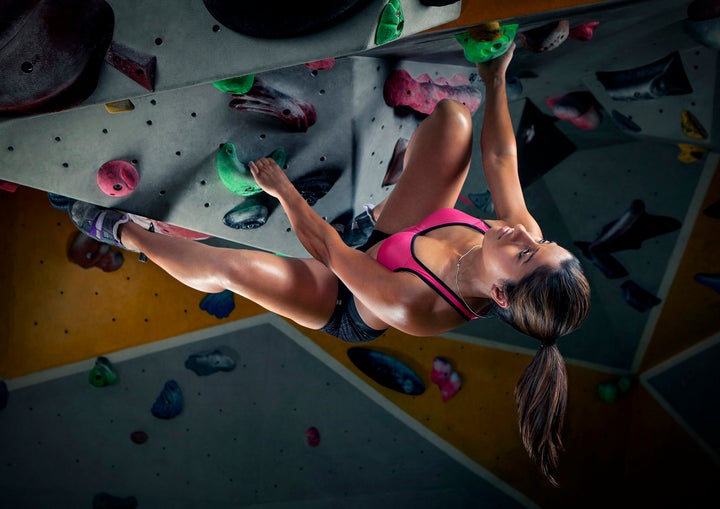
Sunita Kaur, climber.
Obviously social media platforms like Instagram have become integral tools in the modern photographer’s arsenal. Do you feel, however, that Instagram and Tumblr tend to devalue the amount of effort and expertise that professional photographers bring to their craft (because anyone can pick up a camera now and claim to be a professional)?
No, not at all. Although it’s true that anyone can pick up a camera and claim to be a photographer, in the same way that I could pick up a violin and claim to be a concert violinist, just having a camera (or a violin) doesn’t make them any good at using it. The effort and expertise, and the years of practice, are what make a photographer good at what they do, not the equipment they use, or the platform that they share their pictures on. When I take a photo I have to think about pre-production, lighting, composition, all the technical stuff, interacting with the subject, communicating effectively with my client, post-production, and all sorts of other factors that not just anyone with a camera has the skills, knowledge or experience to bring to the shoot. I also often have to produce top quality pictures in an extremely tight time frame and under immense pressure (I once had a very famous singer walk into the studio with a retinue of 25 people, who all stood behind me for the 2 minutes I had with him) and that is a skill in itself: you don't get a second chance if you mess it up!
I love Instagram, both as a platform to share my work and also as a place to see what other people are doing and get ideas and inspiration. In the past it was just so difficult to see interesting photography, unless it made it into a book or magazine; now there is a wealth of amazing stuff just waiting to be viewed, from every corner of the world. I follow photographers from Japan, Nigeria, the US, all over the world.
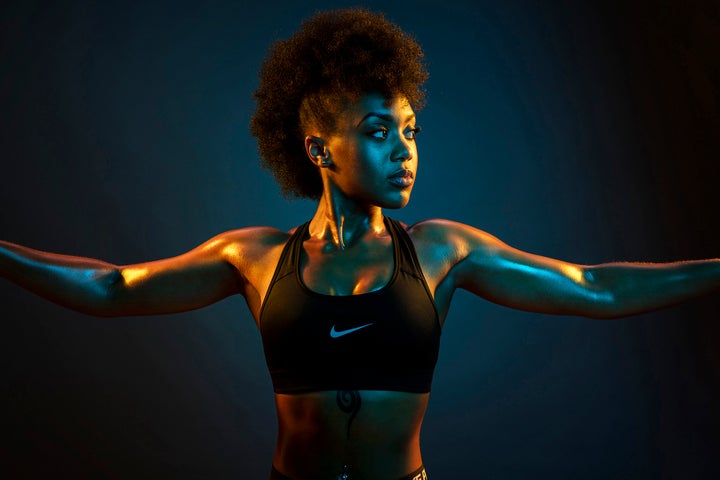
Shaina West, personal trainer and trainee stunt person.
I know you are particularly conscious about the representation of diversity in front of and behind the camera. As a photographer who’s socially conscious, what do you feel you’re adding to this particular conversation with regards to the subjects, artists and models you work with?
I’m very conscious, as a white heterosexual male, of my white male privilege, and that has led me to be aware of just how dominated the photography industry is (in the UK at least) by white male photographers. I was very fortunate when I was a photographic assistant to work with several great female photographers, but they are massively in the minority, as are any minority ethnic photographers. One of the results of this is that photography in general reflects a white male world view, and in particular is hugely oversaturated with images of sexy white girls being celebrated purely for their looks.
For a long time I have tried to avoid taking these kind of pictures, instead trying to celebrate people for their achievements, for instance as a sportsperson, or an artist or entrepreneur. More recently I started becoming more aware that certain ethnic/religious groups were massively underrepresented, or tended to be represented in a negative or, at best, token way. I also learned more about the insidious power of white European beauty standards, and how by only being presented with images of beauty that are white many black and minority ethnic women grow up believing that their natural features are ugly or lesser. I realised the huge positive power of seeing aspirational images featuring people that look like you.
I am trying, slowly, to photograph people in a positive way who tend to be underrepresented through the white male filter of contemporary photography – a couple of upcoming projects, for instance, focus on Muslim women in the UK. It’s not my sole focus as a photographer, more a general attitude, and a commitment to always question the type of people I’m photographing and the way I represent them in my photography. There is so much amazing diversity in the world and it would be such a shame if we only represented a small fragment of that in image-based media.
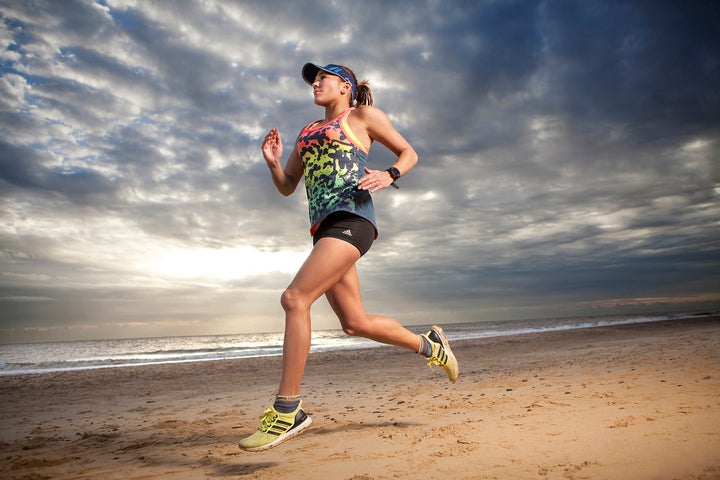
Susie Chan, endurance runner.
What is your dream project if you were given the budget, time and freedom to just create?
I would love to expand on the project I shot in Nepal earlier this year and travel the world shooting portraits of local people, on location, using location flashes, celebrating a variety of different people from different parts of the world for what they do exceptionally well.
Final question, if you could travel back in time, what advice would you give to your younger self?
Set realistic goals and actually get on and achieve them. I spent hundreds of hours sitting in coffee shops with my friend dreaming of the spectacular, elaborate shoots we were going to do, but never managed to actually shoot because there were too many logistical and financial barriers to actually making them happen. Start small and work your way up, use the small jobs to get great clients and then get them to pay you to do big spectacular shoots.
